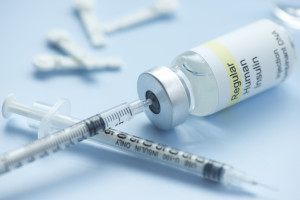Stimulating Human Beta Cells to Multiply

 New research identifies a drug target with the potential to restore human beta cells
New research identifies a drug target with the potential to restore human beta cells
Researchers led by Bryan Laffitte, Ph.D., at the Genomics Institute of the Novartis Research Foundation (GNF), San Diego, CA, reported recently in Nature Communications they discovered novel compounds called aminopyrazines capable of stimulating replication of adult human beta cells both in culture and when transplanted into an animal model. The results might mean that experimental strategies to trigger beta cell proliferation could one day be used to treat T1D in people. Dr. Laffitte’s study was funded by a partnership between JDRF and GNF.
T1D develops when the immune system mistakenly attacks and destroys the body’s beta cells. Because beta cells are the body’s insulin producers, this destruction leads to a chronic shortage of insulin. As a result, people with T1D must regularly supply their bodies with insulin from an external source via injection or pump.
One possible approach to treating T1D is to reestablish a healthy population of insulin-producing beta cells. In many cases, the T1D immune attack does not destroy all of the beta cells, and scientists speculate that if the remaining beta cells were to reproduce in a safe and controlled manner, they could rebuild the population enough to restore insulin production. But beta cells in adult humans do not normally reproduce on their own, leaving scientists to discover how to make this happen.
Dr. Laffitte’s new study is one of the first to succeed in stimulating multiplication of adult human beta cells. His results also showed treatment with aminopyrazines increased the amount of beta cells and insulin present in diabetic mice and helped to normalize their blood-glucose levels. The compounds worked by interfering with an enzyme called DYRK1A, one element of a signaling pathway that helps to regulate cell proliferation.
Another story of beta cell replication success came from JDRF-funded researcher Andrew Stewart, M.D., at Icahn School of Medicine at Mount Sinai, New York, NY. The results were published in Nature Medicine in April 2015. Dr. Stewart’s team showed that a known compound called harmine elicited replication of adult human beta cells in culture and also tripled the number of beta cells present and improved blood-glucose control in mouse models of T1D. Interestingly, harmine seemed to work by inhibiting DYRK1A, the same enzyme targeted by Dr. Laffitte’s aminopyrazine compounds.
Taken together, the results suggest targeting the DYRK1A pathway might be an effective way of stimulating beta cells to replicate. Compounds that interfere with this pathway could eventually form the basis for new drugs that restore beta cells in individuals with T1D. With JDRF’s support, Dr. Laffitte’s and Dr. Stewart’s teams will continue to study this possibility.
Why It Matters
Dr. Laffitte’s and Dr. Stewart’s results identify a promising area where future research may discover specific strategies for stimulating beta cell replication that could ultimately become a component of new therapies for T1D.
Learn More
To learn more or to support JDRF’s Restoration research program, please click here.